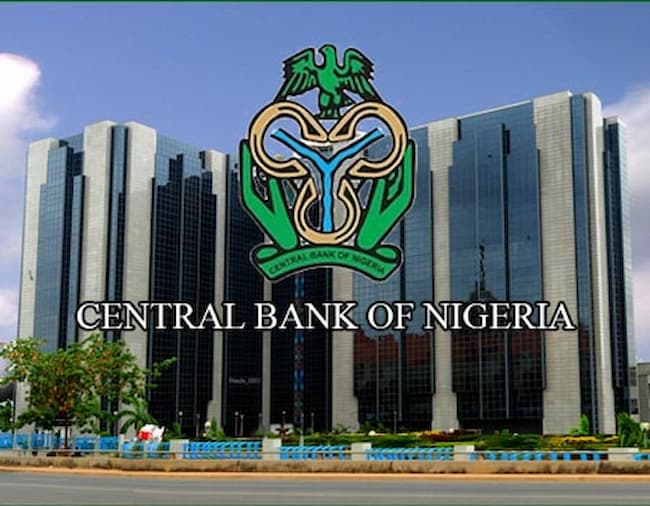According to a report by Afrinvest Research, Nigerian banks and discount houses borrowed a significant N3 trillion from the Central Bank of Nigeria (CBN) using the Standing Lending Facility (SLF) in just one week.
However, these same financial institutions also deposited N493.6 billion with the CBN through the Standing Deposit Facility (SDF) during the same period.
The surge in borrowing led to a 4.7% increase in system liquidity, bringing the total to N712.3 billion. The Standing Lending Facility (SLF) and Standing Deposit Facility (SDF) are tools employed by the Central Bank to regulate the money supply and liquidity within the financial system.
The central bank issued a new directive to boost lending to the real sector, which took effect in April, signaling a shift towards a contractionary monetary policy approach.
Recently, the Central Bank lifted the suspension on the Standing Lending Facility for authorised dealers, following a Monetary Policy Committee decision to adjust the upper corridor of the standing facilities to five per cent from one per cent around the Monetary Policy Rate.
Afrinvest added that the surge in borrowing reflected the increased demand for short-term liquidity by banks and discount houses.
However, despite the liquidity boost, inter-bank lending rates displayed mixed results, with the Open Purchase Rate decreasing by five basis points to 31.2 per cent, while the Overnight Rate edged up by three basis points to 31.7 per cent.
In response to rising liquidity, the Debt Management Office reduced interest rates last week to create favourable borrowing conditions.
In addition to the domestic borrowing, Afrinvest Research noted the successful launch of Nigeria’s inaugural dollar-denominated bond. This five-year bond, intended to raise $500 million to offset the 2024 fiscal deficit, was oversubscribed by $400 million, indicating robust investor interest.
Afrinvest analysts interpreted the recent interest rate cut and strong bond demand as signs of increasing investor confidence in Nigeria’s financial markets. They anticipate these developments to shape market dynamics and borrowing strategies as liquidity levels continue to fluctuate.
In an interview with our correspondent, an economist at Ajayi Crowther University, Segun Ogundare, explained that central banks serve as lenders of last resort, usually offering short-term loans at high rates to banks facing liquidity constraints.
He noted that frequent borrowing from the central bank could indicate deeper issues, warning that persistent liquidity shortages could lead to serious financial challenges for banks, including potential liquidation, as seen in the case of Heritage Bank.
“Central banks typically lend at high rates because the loans they offer to banks are short-term. Banks can approach the Central Bank of Nigeria for different reasons. Maybe they are running low on liquidity or have over-traded and need to restore balance. They might also rush to the CBN to cover themselves or take advantage of opportunities in the money market.
“Sometimes, customers come in large numbers, and banks might find that more money is leaving than coming in. This can cause an imbalance. If this becomes a regular occurrence, it can become a big problem. If not handled properly, some banks could even go into liquidation, as we have seen with cases like Heritage Bank,” he added.
A broker and board member of Highcap Securities, David Adonri, noted that banks typically resort to borrowing from the CBN’s Standing Lending Facility to address temporary liquidity shortages or to seize short-term financial opportunities.
According to Adonri, system liquidity could rise whenever maturing short-term public debt is redeemed, Federation Account Allocation Committee funds are distributed, or deposit liabilities increase.
He noted that those actions inject funds into the banking system, which could elevate overall liquidity levels.
“CBN is a lender of last resort. Banks usually have recourse to SLF to borrow from CBN to meet temporary liquidity shortfalls or to finance emerging short-term opportunities. Whenever maturing short-term public debt is redeemed or FAAC is distributed or deposit liability increases, system liquidity can rise,” he remarked.
He further highlighted that an increase in borrowing through the Standing Lending Facility could boost banking system liquidity in the short term.
However, he warned that this could come at a cost to the banks, saying, “The interest obligation arising from such borrowing can harm a bank’s treasury if the on-lending does not cover the interest expenses.
“Moreover, the injection of large sums of money into the banking system within a short period may contradict the CBN’s policy goals.”
Adonri emphasized that this could hinder the central bank’s attempts to increase the Cash Reserve Ratio (CRR) and potentially negate the impact of contractionary monetary policies.
Concerning the CBN’s control over bank liquidity, he gave a remark stating, “Bank liquidity is controlled by the CBN’s policy on liquidity ratio. As the aggregate assets of banks increase, aggregate liquidity amounts also rise. Liquidity is a moving target.”
Reports indicate that commercial and merchant banks increased their reliance on the Central Bank for liquidity in 2023. Borrowings from the Central Bank rose by 32.07% to N19.81 trillion, compared to N15 trillion in 2022.
This article was written by Tamaraebiju Jide, a student at Elizade University














